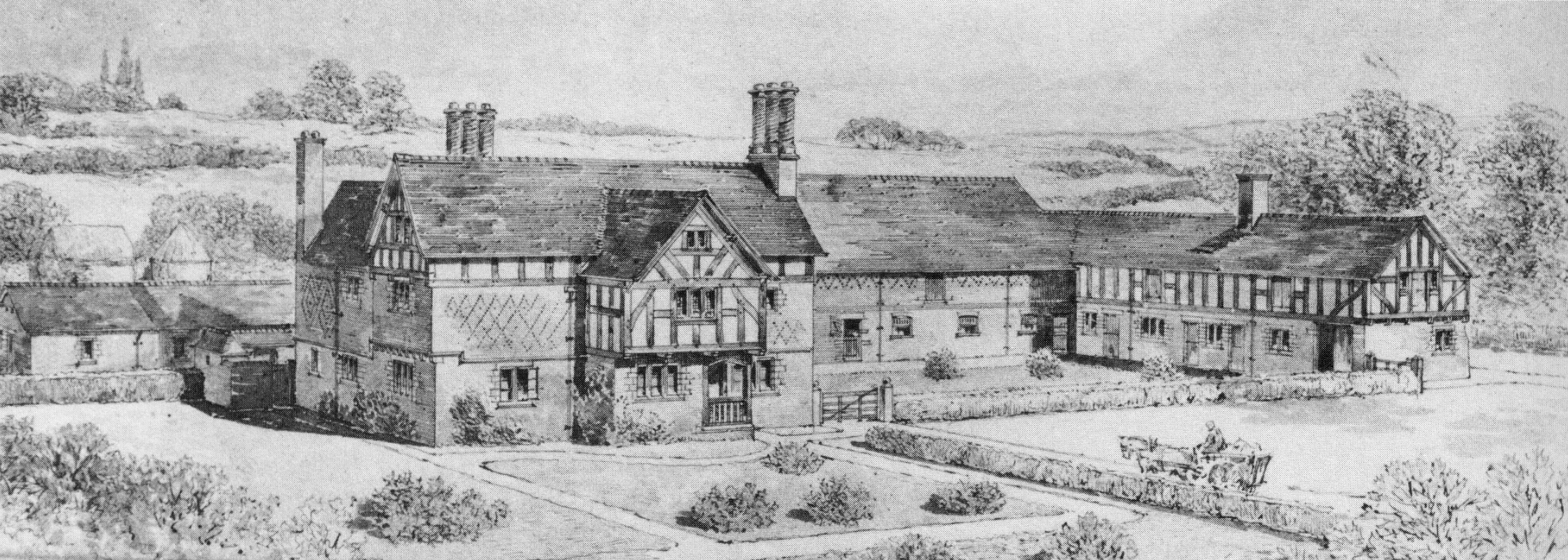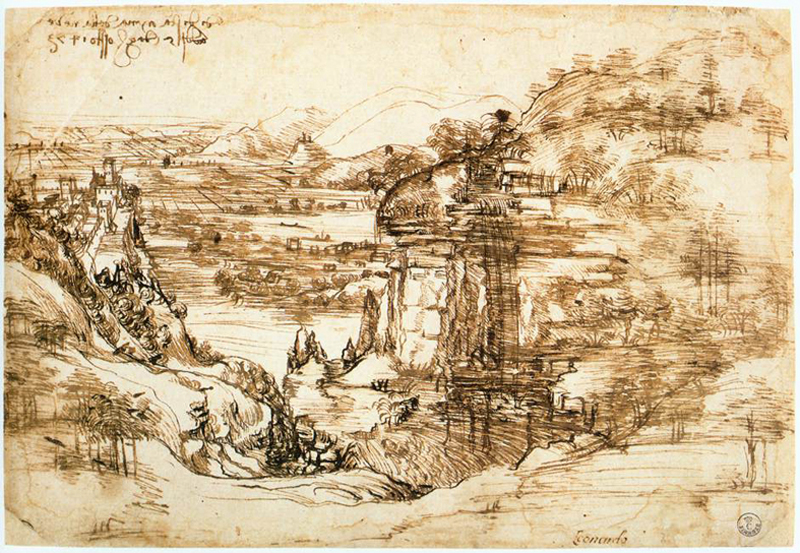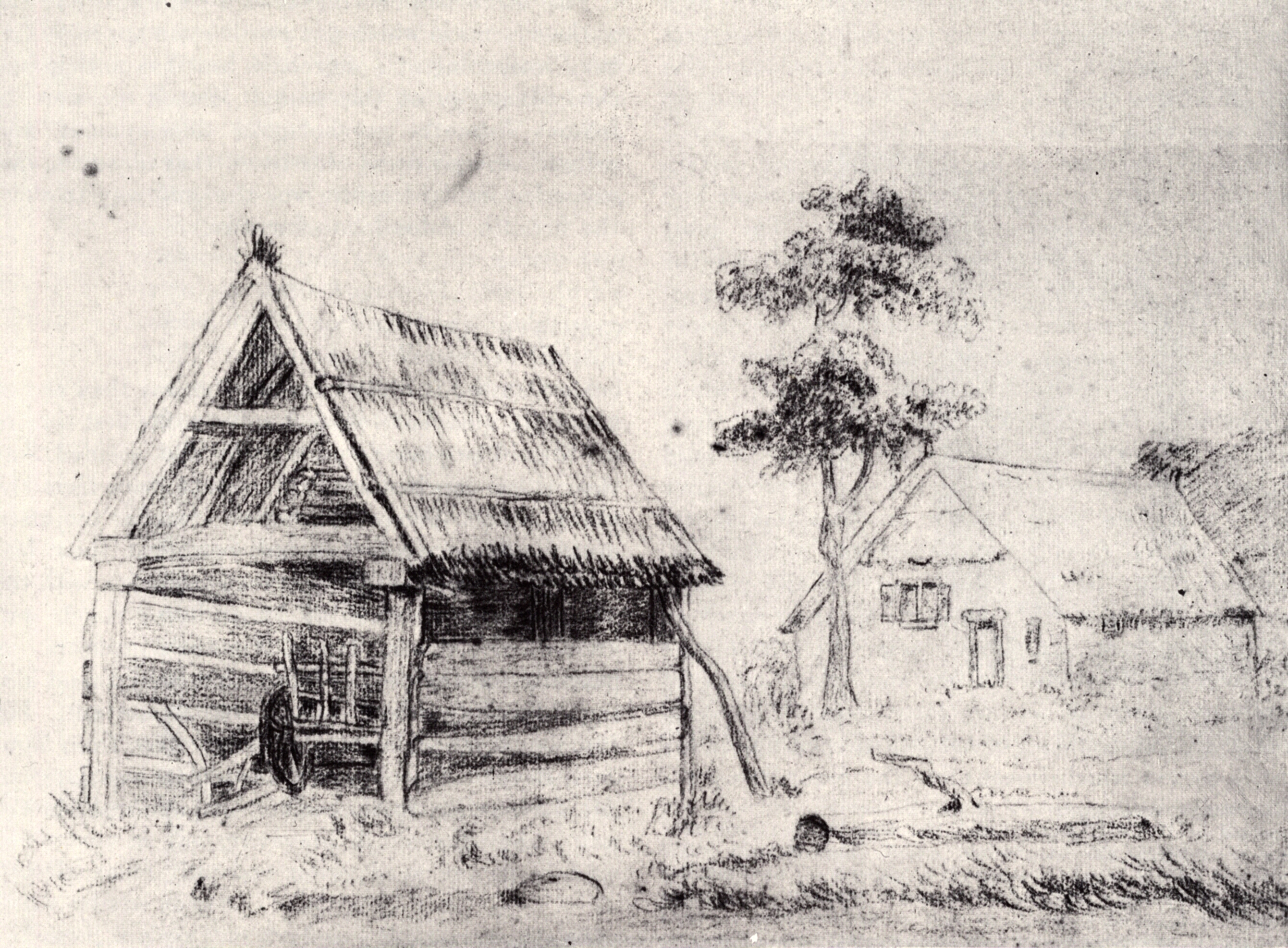INTRODUCTION
Drawing landscapes has always been a deeply rewarding subject for artists. From the vast expanse of mountains to the peaceful stillness of a farmhouse by a river, landscapes capture not only the physical beauty of the world but also the emotions tied to place and memory. With just graphite pencils and colored pencils, you can bring these sceneries to life on paper—shaping textures, depth, and atmosphere with the simplest of tools.
 |
| Drawing of Saighton Lane Farm, Cheshire, in 1888 {{PD-US}} See page for author, Public domain, via Wikimedia Commons |
By the end, you will not only know the techniques but also understand how the masters approached landscape drawing—combining observation, composition, and emotion.
Why Landscape Drawing Matters
Landscape drawing is one of the oldest and most universal forms of art. From the cave drawings of early humans to the majestic sketches of the Renaissance, artists have always turned to nature for inspiration.
For beginners, landscapes such as mountains, rivers, and farms are ideal because they combine simple geometric structures (triangles for peaks, curves for rivers, rectangles for houses) with opportunities for shading and texture. For advanced learners, they offer endless complexity: atmospheric perspective, reflections in water, and the interplay of light and shadow.
Drawing landscapes with graphite pencil emphasizes structure, shading, and tonality, while using colored pencils allows you to explore mood, season, and atmosphere.
Materials You Need
Before diving into techniques, prepare your drawing tools:
-
Graphite pencils (HB for outlines, 2B–8B for shading depth)
-
Colored pencils (artist-grade, with a range of greens, browns, blues, and grays)
-
White drawing paper (120–160 gsm for graphite, 200 gsm for colored pencil layering)
-
Blending stumps or tissue for smooth shading
-
Eraser (regular and kneaded) for highlights and corrections
Step-by-Step Guide: How to Draw Landscapes
Let’s explore each element—mountains, rivers, farms, and farmhouses—with graphite and colored pencil techniques.
1. How to Draw Mountains
 |
| Crozzon di Brenta from the south, 1890 Schlesinger, CC BY-SA 3.0, via Wikimedia Commons |
Step 1: Basic Shapes
-
Sketch the mountain as a series of overlapping triangles.
-
Keep the peaks irregular for a natural look.
Step 2: Graphite Shading
-
Identify the light source. Shade one side darker; leave the other lighter.
-
Use cross-hatching or smooth shading to show rocky textures.
-
Blend with a stump for misty effects near the base.
Step 3: Colored Pencil Layering
-
Apply light layers of grey, brown, and blue.
-
For snow-capped peaks, leave the top areas white and blend soft blue shadows.
-
Build depth by layering darker tones at the base and lighter tones higher up.
2. How to Draw Rivers
Rivers add motion and reflection to landscapes.
Step 1: Outlines
-
Draw two curving lines converging toward the horizon, wider at the bottom, narrower at the top.
Step 2: Graphite Texture
-
Shade lightly with horizontal strokes to suggest water.
-
Darken near the edges and under any rocks or trees.
Step 3: Colored Pencil Reflection
-
Use blues and greys for the water.
-
Mirror the colors of mountains, sky, or trees in faint, broken strokes.
-
Add white highlights with an eraser to capture shimmering light.
3. How to Draw Farms
Farms symbolize productivity, peace, and connection to the land.
Step 1: Structure
-
Begin with wide rectangles for fields. Divide them into sections with light lines for perspective.
Step 2: Graphite Depth
-
Shade differently for plowed land vs. grassy fields.
-
Add small strokes for crops, rows, or texture.
Step 3: Colored Pencil Variety
-
Use multiple greens for fields: dark green for foreground, lighter green for distant areas.
-
Browns and ochres for plowed soil.
-
A touch of yellow to show sunlight.
4. How to Draw Farmhouses
Farmhouses combine human architecture with nature.
Step 1: Outline
-
Start with rectangles and triangles (walls and roof).
-
Add perspective lines if the house is angled.
Step 2: Graphite Shading
-
Shade the walls lightly, leaving windows brighter.
-
Darken the roof for contrast.
-
Add texture for bricks or wooden planks.
Step 3: Colored Pencil Details
-
Red or brown for the roof, soft beige for the walls.
-
Use green around the base for grass.
-
Blue-grey for shadows under the eaves.
Lessons from the Masters: Five Famous Landscape Drawings
Now let’s turn to five important artists whose drawings of landscapes can guide your own approach.

Arno Valley Landscape Leonardo da Vinci,
Public domain, via Wikimedia Commons {{PD-US}}
1. Leonardo da Vinci – Landscape Drawing for Santa Maria della Neve (1473)

Public domain, via Wikimedia Commons {{PD-US}}
Leonardo da Vinci’s remarkable pen and ink drawing, The Arno Valley, holds a significant place in art history, as it’s widely recognized as the first genuine landscape in Western art.
Unlike previous works that used nature merely as a backdrop for religious or mythological scenes, Leonardo’s drawing puts the landscape itself front and center. Created on August 5, 1473, this piece is more than just a depiction; it showcases an intricate study of geological formations and atmospheric effects.
Through the delicate interplay of light and shadow and the meticulous rendering of the rolling hills and winding river, Leonardo captured the essence of the Tuscan countryside, elevating the genre to a subject worthy of artistic exploration. This pivotal work moved art beyond mere illustration and into the realm of observational science and pure aesthetic appreciation.
-
Lesson: He used lines not just to outline forms but to suggest depth and atmosphere.
-
For learners: Study how Leonardo layers distance—foreground trees, midground rivers, background mountains.

View of Arco
Albrecht Dürer, Public domain, via Wikimedia Commons
2. Albrecht Dürer – View of Arco (1495)
Albrecht Dürer, Public domain, via Wikimedia Commons
Albrecht Dürer’s watercolor and pen drawings of landscapes are widely regarded as masterpieces, celebrated for their exceptional detail and keen observation.
Unlike many of his contemporaries who used nature as a mere backdrop, Dürer treated the landscape as a primary subject, meticulously capturing every nuance of the natural world.
Works like his famous A Young Hare and The Great Piece of Turf reveal an almost scientific precision in their rendering of textures, light, and form. These drawings not only demonstrate his technical skill but also his profound appreciation for the beauty and complexity of nature.
-
Lesson: His precise lines capture rocks, houses, and terrain with accuracy.
-
For learners: Practice careful contour drawing of farms and houses, inspired by Dürer’s clarity.
3. John Constable – Pencil Sketches of the English Countryside
Constable, known for his romantic landscapes, often sketched farmhouses, rivers, and trees in graphite.
-
Lesson: His sketches are loose yet structured, balancing accuracy with feeling.
-
For learners: Try sketching with quick strokes first, then add shading for depth.
4. J.M.W. Turner – Colored Pencil and Watercolor Studies
Turner is famous for atmospheric landscapes. While best known for watercolors and oils, he also used colored pencils in his studies.
-
Lesson: He layered colors to create mood—misty blues for rivers, golden tones for sunsets.
-
For learners: Experiment with blending colored pencils to capture atmosphere, not just objects.
5. Vincent van Gogh – The Farmhouse in Provence (1888)
 |
| Barn and Farmhouse 1864 Vincent van Gogh, Public domain, via Wikimedia Commons |
His vigorous, gestural marks convey not just the physical structure of the buildings but also the rustic character of the countryside and the raw, heartfelt connection he felt to the land.
These works are a powerful testament to his ability to transform ordinary scenes into deeply personal and moving artistic statements.
-
Lesson: His strokes are dynamic, conveying movement even in still objects.
-
For learners: Use bold pencil marks to show texture in roofs, fields, or tree bark.
Combining Graphite and Colored Pencil Techniques
One of the best approaches for modern learners is to combine graphite and colored pencils:
-
Start with graphite for outlines and initial shading.
-
Add colored pencil layers for atmosphere and emphasis.
-
Preserve highlights with erasers or leave areas unshaded.
-
Blend colors gradually for skies, rivers, and fields.
This hybrid method gives you both the control of graphite and the vibrancy of color.
Practical Exercises
-
Mountain Study: Draw a single peak in graphite, then repeat in colored pencil. Compare depth.
-
River Reflection: Sketch a river with pencil shading. Add blue tones and mirrored reflections with colored pencil.
-
Farm Fields: Practice perspective by drawing fields shrinking into the distance.
-
Farmhouse Focus: Create three versions: a line drawing, a shaded graphite, and a colored pencil rendering.
-
Master Copy: Reproduce a Leonardo or Dürer landscape study to practice precision.
Keywords
-
how to draw landscapes
-
how to draw mountains with pencil
-
pencil shading rivers
-
colored pencil farmhouse drawing
-
famous landscape drawings
-
graphite and colored pencil techniques
-
step-by-step drawing of farms and houses
Conclusion: Drawing Landscapes as a Lifelong Journey
Learning how to draw mountains, rivers, farms, and farmhouses is more than just a technical exercise. It connects you with centuries of artists who looked at the land and translated its beauty onto paper. Using graphite pencils, you can master light, shadow, and form. With colored pencils, you can explore mood, season, and atmosphere.
By studying the works of Leonardo da Vinci, Albrecht Dürer, John Constable, J.M.W. Turner, and Vincent van Gogh, you learn that landscapes are not static—they are living expressions of nature and emotion.
So take your pencils, step outside, or look at a photograph, and begin. Every line you draw is part of a tradition that stretches back to the very roots of art itself.
No comments:
Post a Comment